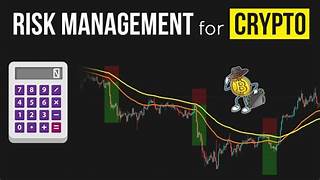A Critical Assessment of Risk Management in Internet Trading
Introduction
Internet trading, also known as online trading, has revolutionized the financial markets by providing individuals and institutions with easy access to stocks, forex, cryptocurrencies, and other assets. While this accessibility has opened new investment opportunities, it has also introduced significant risks. Effective risk management is crucial to navigating the volatile nature of internet trading. This article critically assesses risk management strategies in internet trading, examining potential threats and best practices for mitigating them.
1. Understanding Risk in Internet Trading
Risk in internet trading arises from multiple factors, including market fluctuations, technology failures, cyber threats, and human errors. Traders must recognize and manage these risks to avoid financial losses.
Types of Risks:
- Market Risk: Price volatility can lead to substantial gains or losses.
- Liquidity Risk: Some assets may have low trading volumes, making it difficult to buy or sell quickly.
- Cybersecurity Risk: Online trading platforms are targets for hacking and fraud.
- Leverage Risk: High leverage increases the potential for significant losses.
- Regulatory Risk: Changing laws and regulations may affect trading activities.
2. Key Risk Management Strategies in Internet Trading
Traders and investors employ various strategies to mitigate risks and protect their capital.
a. Diversification
- Spreading investments across multiple assets reduces exposure to a single market downturn.
- Holding a mix of stocks, bonds, and commodities balances risk and reward.
b. Stop-Loss and Take-Profit Orders
- Stop-Loss Orders: Automatically sell an asset when its price reaches a predetermined level to limit losses.
- Take-Profit Orders: Lock in profits by selling at a specific price target.
c. Risk-Reward Ratio Management
- Maintaining a risk-reward ratio of at least 1:2 ensures potential gains outweigh potential losses.
- Calculating position sizes based on risk tolerance prevents excessive exposure.
d. Leverage Control
- Using low leverage minimizes the risk of margin calls and liquidation.
- Understanding margin requirements prevents overleveraging.
e. Staying Informed and Analyzing Market Trends
- Following financial news and market trends helps traders anticipate price movements.
- Using technical and fundamental analysis enhances decision-making.
3. The Role of Technology in Risk Management
Technology plays a crucial role in managing risks in online trading.
a. Algorithmic Trading and AI
- AI-driven bots execute trades based on real-time data and predefined strategies.
- Automation reduces emotional trading and improves efficiency.
b. Cybersecurity Measures
- Using two-factor authentication (2FA) and encryption protects trading accounts.
- Secure trading platforms implement anti-phishing measures and fraud detection.
c. Risk Management Tools
- Online brokers provide risk assessment tools that help traders manage exposure.
- Volatility indicators and sentiment analysis assist in predicting market movements.
4. Challenges in Risk Management for Internet Trading
Despite advancements in risk management, traders still face challenges:
- Emotional Trading: Fear and greed often lead to poor decision-making.
- System Failures: Technical glitches can cause order execution delays.
- Flash Crashes: Sudden market drops can result in significant losses.
- Regulatory Changes: New trading restrictions or tax policies can impact profitability.
Conclusion
Risk management in internet trading is essential for long-term success. By diversifying portfolios, setting stop-loss orders, managing leverage, and leveraging technology, traders can mitigate risks and enhance profitability. However, challenges such as market volatility, cybersecurity threats, and regulatory changes require continuous adaptation. A disciplined approach to trading, combined with robust risk management strategies, ensures a more stable and profitable online trading experience.


